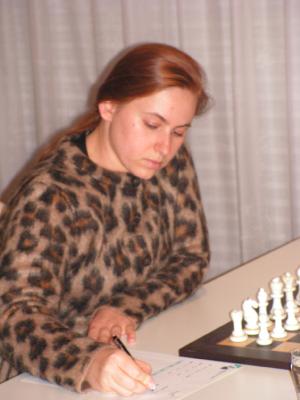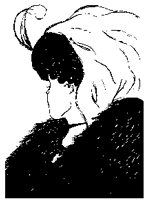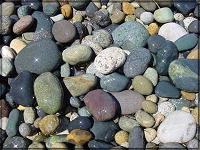I really, really like this video. I like the song. I like what the video looks like.
Category: FUN THINGS
How to Get Out of a Bad Mood – the A.P.E. Method!
Our first question was, should you get out of a bad mood? Suppose that our answer is already, YES. Now, what do we do? (Update: After you read this, you may want to keep handy the three sentences for the A.P.E. Method.)
Karen Reivich, co-author of The Resilience Factor, suggests some concrete steps. In a talk she gave at our Positive Psychology classes, Karen gave the best three suggestions I’ve heard for getting out of a bad mood. These are practical and immediately usable.
The problem with bad moods is that they stop you in your tracks, they hinder you from doing other things that can lead to continued small successes and that can move you forward in life. Additionally, as Dave Seah points out, you can’t always be waiting for the muse. Most often in life, you need to do things whether you’re in a bad mood or a good mood. For example, compare a person who takes actions to move his life forward only when he’s in a good mood (or when the muse strikes him) to a person who takes actions to move his life forward no matter what mood may have set on him temporarily. Who will likely be more productive?
Here are the three principles Karen Reivich teaches to get out of a bad mood. I remember these as A.P.E.
A – Alternatives
P – Perspective
E – Evidence
Karen Reivich suggests that these are best used “When you need to disarm negative thoughts so that you can stay focused on the task at hand.†At the same time, these are not necessarily the best techniques to use “When you need a thorough, thoughtful and comprehensive understanding of a problem.â€
So you want to stay focused on the task at hand, on moving your life forward. What do you do?
A – Alternatives
You can generate alternative beliefs. For example, if the bad mood started with thinking, “I haven’t done anything productive at work in the past year. I haven’t contributed anything. I’ll never contribute anything. And not only do I stink at work recently, but everything else is going down the drain too.â€â€¦ then what are some alternative beliefs that you could seek?
Karen Reivich characterizes the possible alternative beliefs into three categories (that are introduced with great thoroughness by Marty Seligman here):
Me / Always / Everything.
If your beliefs tend to focus on “me†– “I did this, I got myself into a decade worth of trouble,†then try to look outwards a little bit … not too much – do not rationalize away your own potential contribution to the situation. But do look outward if you tend to blame yourself. Do look at the environment, the surroundings, and provide other possible explanations. (Create an alternative).
If your beliefs tend to focus on “always†– “I’m never good at my work, I always mess up at the office, this never goes right for me,†then train your brain to find the one thing that you consistently excel at during work. Feel that pride – no matter how small – in that one thing that you own, that is yours, and that you can reliably think about to know that you are good at that part of work. (The point is to create one alternative, so it is not always).
If your beliefs tend to focus on “everything†– “And not only am I not good at my work, I can’t meet a great girl/guy, I’m terrible at keeping in touch with friends,†then train your brain to find the one part of life in which you have control. Feel that control in that part of your life – no matter how small that part may be – maybe brushing your teeth, maybe emailing a certain friend regularly. (Create an alternative thought-pattern: not everything.)
P – Perspective
A friend of mine Emma who is also a practitioner of Positive Psychology says that she once heard something say something so visual that she will not forget it.
“Imagine the biggest issue you have – the biggest, most terrible problem or set of problems that you can come up with. Now blow them up – imagine them even bigger and more terrible. Imagine close to the worse that can happen. Imagine all those problems spinning around like the tornado in Dorothy’s Kansas at the beginning of the movie. …
Now take that entire storm and all those issues and shrink it down and put the entire storm into a teacup.â€
And that’s exactly how I see it – a white porcelain tea cup on a white porcelain delicate plate, and a small steam above the teacup where the remains of the storm can be seen. It is the super-literal description of the phrase “storm in a teacup,†and talk about perspective!
Do that – put some perspective on the issues. What are the probabilities that everything will go wrong? Usually not 100%. Put the perspective of time on it (probably not as intense if you were to look back on this from 50 years in the future). Put the perspective of seriousness on it (these are bad moods, but nobody should be dying from this). Put the perspective of “me†on this (how impenetrable does my problem look compared to starving children). The perspective of comparison is called downward social comparison… but in psychological studies it has proven to be effective in precluding depression.
The goal in finding perspective is to create flexibility in thinking. It is not to create an excuse for things that may actually have gone wrong, but it is to minimize the impact on your life of certain thoughts.
E – Evidence
Find concrete evidence to the contrary. If you are in a bad mood because you are berating yourself, then create evidence to the contrary. If the argument is that you’ve never done anything good in your work for the past decade, get a piece of paper and list two things that you have done well. That’s it – two things. Two concrete examples.
Lesson & Take-Away: If you’re in a bad mood, and want to switch to being productive and focused, use these three techniques to get out of your bad mood:
- A – Create Alternatives for why something may be happening to dispute negative, bad mood thoughts,
- P – Put the issue in Perspective to get out of a bad mood, and
- E – Use concrete Evidence to discount the bad-mood self-talk in your head.
My 10 Favorite Books
My favorite ten books – that I would take to a deserted island, that I return to every year or few years, that I think about often, that I give copies of to my friends … here they are!
Number 10 – several book tie for tenth:
Learned Optimism by Seligman, The Happiness Hypothesis by Haidt,
The Resilience Factor by Reivich/Shatte, Aging Well by Vaillant
Number 9 – The Best Short Stories of the Century
Number 8 – The Pathway by Laurel Mellin
Number 7 – The Grasshopper: Life, Games and Utopia by Bernard Suits
Number 6 – The Dot and The Line by Norman Juster
Number 5 – In My Father’s Court or Passions by Isaac Bashives Singer
Number 4 – The Jungle Book by Rudyard Kipling
Number 3 – Cheaper by the Dozen by the Galbraith children
Number 2 РThe Little Prince by Antoine de Saint-Exup̩ry
Number 1 – The Alchemist by Paulo Coelho
What are your top ten favorite books?
Or top three favorites, off the top of your head?
This list will, of course, change from time to time, and I’ll update it here.
Penguins
Have you seen March of the Penquins? GREAT MOVIE! I highly, highly recommend it.

|
Here is a great penguin spoof by CANAL+ about how sometimes it’s better to see a movie than talk about it!
In Europe, “March of the Penguins” was called “March of the Emperor.” ENJOY IT!!! |
Also, here is the song Somebody by Queen from the movie Happy Feet.

Finally, in chinatown in NYC, there are chinese bakeries that make super-good-looking Penquin cookies!
FUN THINGS
Introducing… the FUN THINGS category.
This category includes:
* Books
* Fun
* Moments
* Lessons and Take-Aways
* On Blogging & Writing
Walnuts & Rice
An interesting lesson-story gets passed down from generation to generation in some families. I’ve heard this story from my friends with some variation, but for some reason in the accounts, it’s consistently the father who is the main hero who demonstrates this phenomenon. Here are the two main versions I know:
And then the father says to his little girl, “See, it’s just like this – if you put in the important things in life first (laughing with mom and me, doing your homework, visiting grandma and grandpa), then the little things will all fit, and if you put in the little things in your life first, then the lrage rocks just won’t have any space.”
| And then I imagine the child saying, “Oh, no, dad, that’s silly. Try it the other way!” And then the walnuts go in first, and after that the rice. And then the father says to the child, “the walnuts are like the people you love your mom, your brother and me and the rice is all the things in life that we all think we need.” |

|
The above are lyrics from Kevin Briody. The words are from his song “Walnuts and Rice,” which I heard him perform once live, and it was great. Kevin Briody (rhymes with “sobriety”) is a singer-songwriter, and if you like it, you should catch him performing sometime. Another excerpt from Walnuts and Rice:
He took one handful of walnuts
and one handful of rice
you see my dad he had a funny way
of handing out advice
first he poured the rice in
this empty candy jar
but when he poured the walnuts in
they spilled down to the floorHe said, “the walnuts are like the people you love
your mom, your brother and me
and the rice is all the things in life
that we all think we need
how we fill this empty jar
is how we live our lives
first things first, there’s room for both
walnuts and rice”Well i looked at him all confused
and he looked at me all content
as the smile grew across his face
i asked him what he meant
then he emptied out that jar
but before he put it back
this time he poured the nuts in first
and the rice filled in the cracks
Note: Written on 11-16 and posted for 11-15 to precede quote Thursday.
Pumpkins!
This is the first year in my life that I’ve ever carved pumpkins! Mine’s the one in the front. I really like my friend’s scary one in the back too – especially the teeth and dennis-the-menace hair! :)

Incredible Day for WOMEN in CHESS! Judit Polgar!
Today is an incredible, historic, wonderful day for women in chess!
Judit Polgar beats Veselin Topalov. Topalov is the highest ranked chess player in the world. He was the FIFE World Chess Champion for 2005. This is the first time that a woman has ever beaten the highest ranked player. Topalov’s chess rating has been at 2890, and is currently 2813. Polger’s chess rating is currently 2710.

The Essent Chess Tournament 2006 is currently going on (Oct 20-28). (The site is mainly not in English, but the chess moves, photos, and standings are quite readable. Judit is in the Crown Group.) In this tournament (today’s news), Judit Polgar, 30, beat Veselin Topalov, 31. There are six rounds in the tournament, and so far, Polgar is winning the first two rounds!
To watch the winning game, click here. Then hit the play button “>” to watch each move. Judit plays white. It is incredible to me that in her moves 16-17 and 26-27 are both two-part moves to accomplish something – that she is calm enough to move her pieces in time to where she wants them to be. Try to guess move 26 before she makes it. The commentators say this was her winning move. Pause at move 25 and see what you think.
Links:
* She is a mother of two, and returned to chess in January ’06 after a fifteen-month maternity leave.
* Judit Polgar wikipedia entry.
* The chess games of Judit Polgar.
* Some photos of Judit.
* I wrote about the Polgar family before here (specifically her father and how he trained his three daughters, the youngest of which, Judit, is the most successful in chess).
* Brief bio from chessgames.com, “Judit Polgar was born in Hungary in 1976. Her childhood consisted of an extensive chess education from her father and her sisters, and she began to compete internationally as early as 1984. In 1991 she became an International Grandmaster by winning the “men’s” Hungarian championship. At fifteen years and five months of age, she was the youngest grandmaster in history, breaking a record that Robert James Fischer had held for over 30 years. She has been the highest-rated woman ever since FIDE’s January 1990 list, and in 2003 she entered the overall top ten.”
* Judit’s sister Susan Polgar runs a Chess Center in NY and has an active and very interesting blog.
SENIA.COM – September, 2006
Here is the summary of September, 2006.
Hello to the start of autumn.
My favorite entry from September is Today is Everyday.
BTW, my October resolution is to write every weekday (like Fred says) and to have a new post (even if it’s a mini-post every M-F)
Thoughts and Recommendations
Sharpbrains Blog!, When Is Intuition Different From a First Thought? (more on this topic in Oct, Nov!), Missing Mondays, Wednesday, Life Moves Forward
Regularly-Scheduled Fun Stuff :)
- Tuesday Stories:
“The Gift of Insults†by zenstories
“But You Remember the Blueâ€
“Why Do People Kill People?â€
- Thursday Quotes:
Past the Persona, Simplicity, Complexity, Sleep (much more to come on this in Oct or Nov), On Stress, Today is Everyday (love these quotes on today and everyday!)
- Friday Questions:
What’s your favorite flower?
What have you done this week to make someone happy?
Boo!
What’s the craziest thing you’re going to do this weekend?
See you MUCH MORE in October! Enjoy the outdoors – it’s probably early autumn or early spring wherever you are!
Senia
Introducing … the Sharpbrains Blog!
Alvaro Fernandez has started a wonderful blog: the Sharpbrains blog, all about brain fitness! I posted once about the company that Alvaro runs, Sharpbrains, and the interesting articles on that website.
Here are some of my favorites from his posts so far:
- 1) The “It” in “Use It or Lose It”: what are the different parts of the brain that people should think about exercising?
2) Physical Fitness and Brain Fitness: this post includes the super-interesting quote: “rats that get regular exercise literally grow bigger brains than sedentary rats.â€
3) The Brain and Mind Fitness Revolution is here with us: how do you improve brain fitness and waht in terms of neuromarketing affects decision-making?
And today’s Sharpbrains post relates to both #2 mind-body and #3 decision-making: Mind/Body and the Role of Emotions in Decision-Making.
My favorite section of the sharpbrains blog is the brain exercises section. This section, which is updated with a new brain puzzles every few days, has you shuffle around different parts of your brain – sometime doing estimates and calculations, sometimes interesting word exercises, and my favorite is that Alvaro puts up many visual puzzles, such as the penny question, the Stroop test, and the classic old-lady/young-lady (see the post for an explanation of the below image):

So enjoy Alvaro’s blog! And he says that any questions you have on the brain to email him or to post comments on the blog.
In closing, here is the New Yorker’s recent update of the Old Lady / Young Lady discussion. :)


